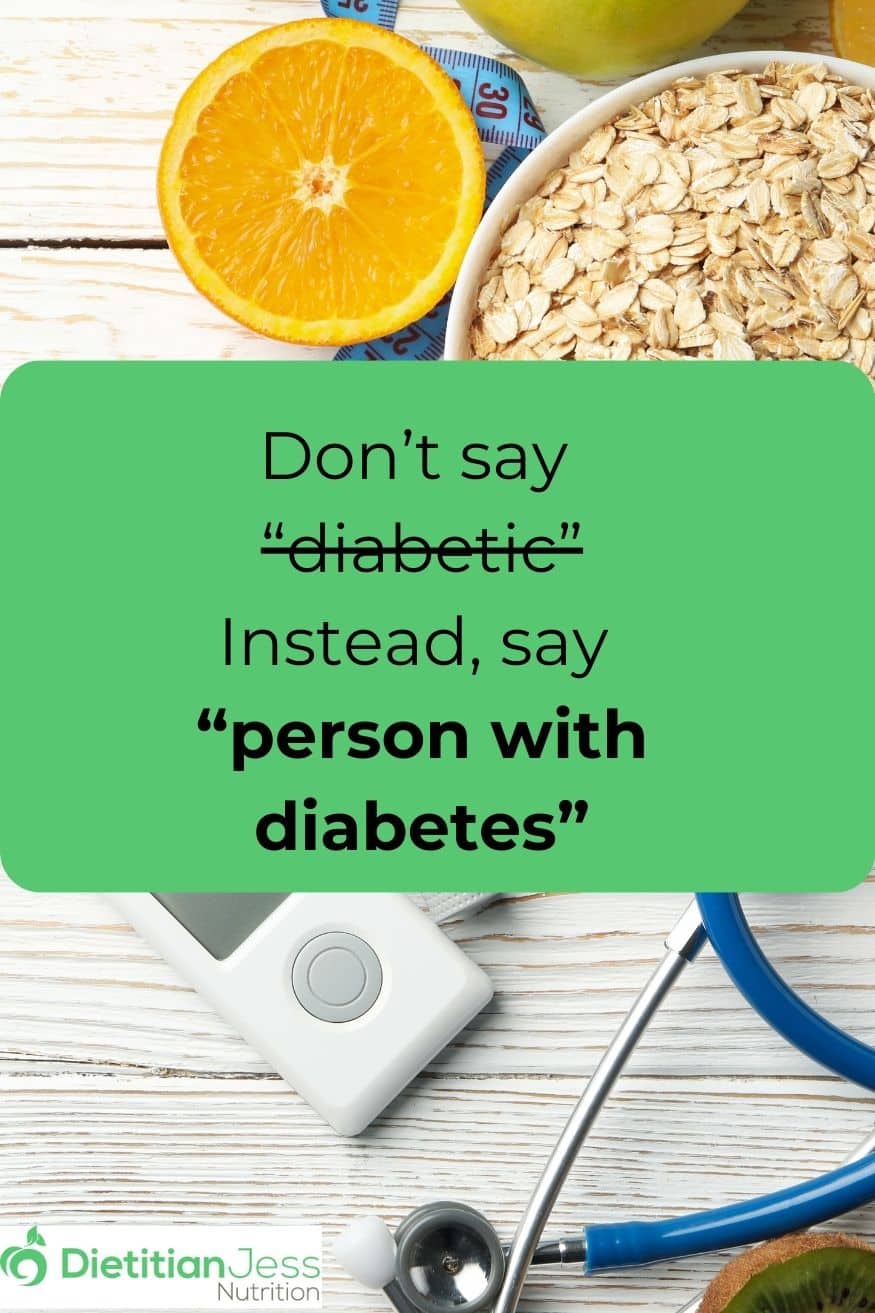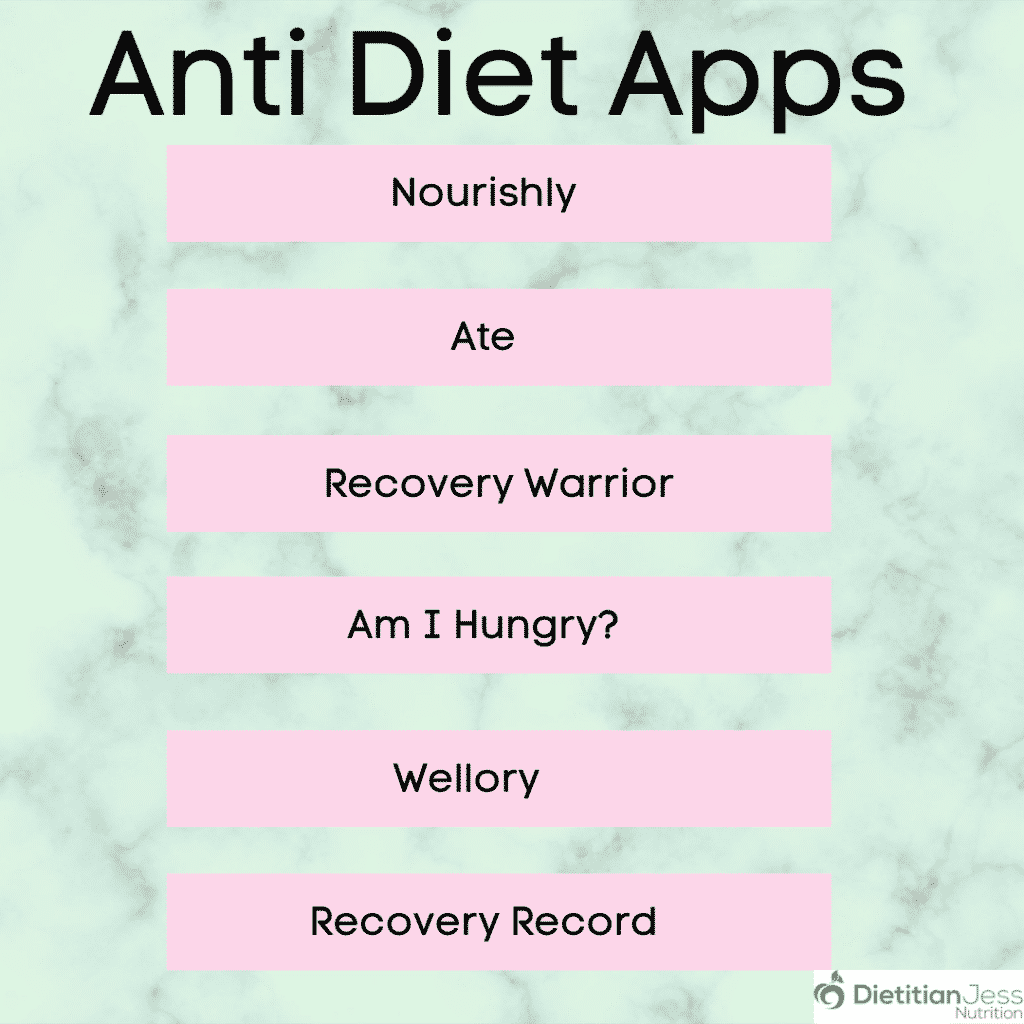Did you know you shouldn’t use “diabetic” when talking about someone with diabetes??

Why you should use “person with diabetes” not “diabetic”
In my practice as a non-diet dietitian, I’ve embraced a weight-inclusive approach that values each person as an individual, not a diagnosis or a number on a scale. This philosophy extends to my language when discussing health conditions, particularly diabetes. Instead of referring to someone as a “diabetic,” I say “person with diabetes.” This may seem like a small change, but it has a profound impact on how we view and treat those living with diabetes.
Understanding Person-First Language
The person-first language emphasizes the individual before the condition. It’s about recognizing that people are not defined by their medical conditions. When we say “person with diabetes,” we acknowledge the person first and foremost, rather than labeling them by their condition.
This approach aligns with my practice’s commitment to respect and dignity for all clients. By shifting to person-first language, we can help dismantle outdated views that contribute to stigma and stereotyping.
Examples of Person-First Language in Healthcare
Using person-first language isn’t just a trend—it’s a meaningful practice that can be applied across various health conditions. The Standards of Care in Diabetes from the American Diabetes Association strongly encourages health practioners to implement patient-first language.
Here are other examples that we commonly see in healthcare settings:
- “Person with diabetes” instead of “diabetic”
- “Person with anorexia” instead of “anorexic”
- “Person with a disability” instead of “disabled”
This small linguistic shift communicates that we see our clients as whole people, not just their diagnoses. This respect is foundational in building a trusting and supportive client-dietitian relationship. When clients feel respected and valued, they are more likely to engage openly in discussions about their health, leading to better outcomes.

Reducing Stigma and Stereotyping
Stigmatizing language can perpetuate harmful stereotypes. By saying “person with diabetes,” we help reduce the stigma associated with the condition. This is crucial for encouraging people to seek care and support without fear of judgment. The HAES (Healthy At Every Size) movement also supports this language and the mentality of shifting the focus from weight to health.
The Standards of Care for Diabetes further discusses the importance of building positive health behaviors and maintaining psychological well-being. This person-centered foundation for diabetes care helps limit diabetes stigma, improve management, and create a better quality of life.
This is the same reason I shy away from using language like “overweight” or “obesity” because I find it can be problematic and equally stigmatizing. There’s a strong association of having an elevated BMI and developing diabetes but this is a correlation, not causation. Not every person in a larger body has diabetes. These trends are likely stemming from genes creating metabolic issues.

Common Misconceptions about Person-First Language
-
Misconception: It’s Just Political Correctness
Some may dismiss person-first language as mere political correctness. However, it’s about much more than that—it’s about creating a respectful and inclusive environment for everyone.
-
Misconception: It’s Too Complicated to Implement
Changing the way we speak may seem challenging at first, but with practice, it becomes natural. The benefits far outweigh the initial effort required to adopt this language.
-
Misconception: It Doesn’t Make a Difference
Language shapes our perceptions and actions. By using person-first language, we can make a significant positive impact on how people with diabetes feel about themselves and their condition.
Diabetes Stigma
In my marketing content I often use “diabetic” because many of my clients and audience use that language themselves. I will use diabetic for marketing purposes but will rarely use that verbiage out loud. You can see in previous posts I’ve used diabetic and diabetes interchangeably to reach my audience more easily but know that I observe person first diabetes care.
It’s a goal of mine to shift further into being an ally against diabetes stigma so I do apologize to any readers who have felt stigmatized or upset with me for using that type of terminology.


